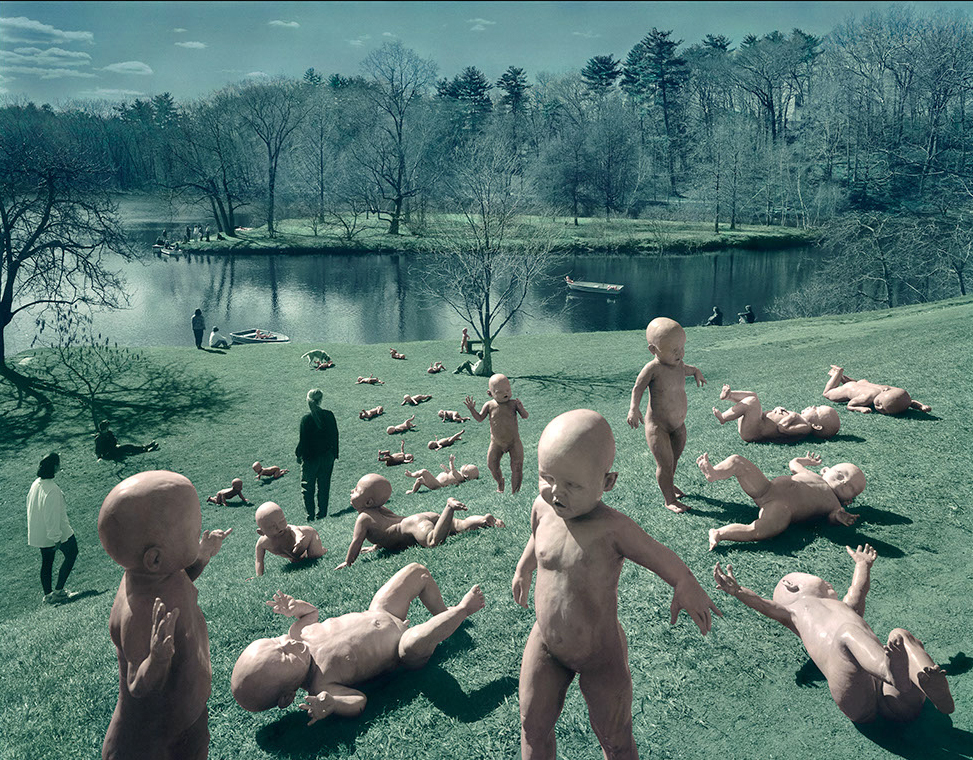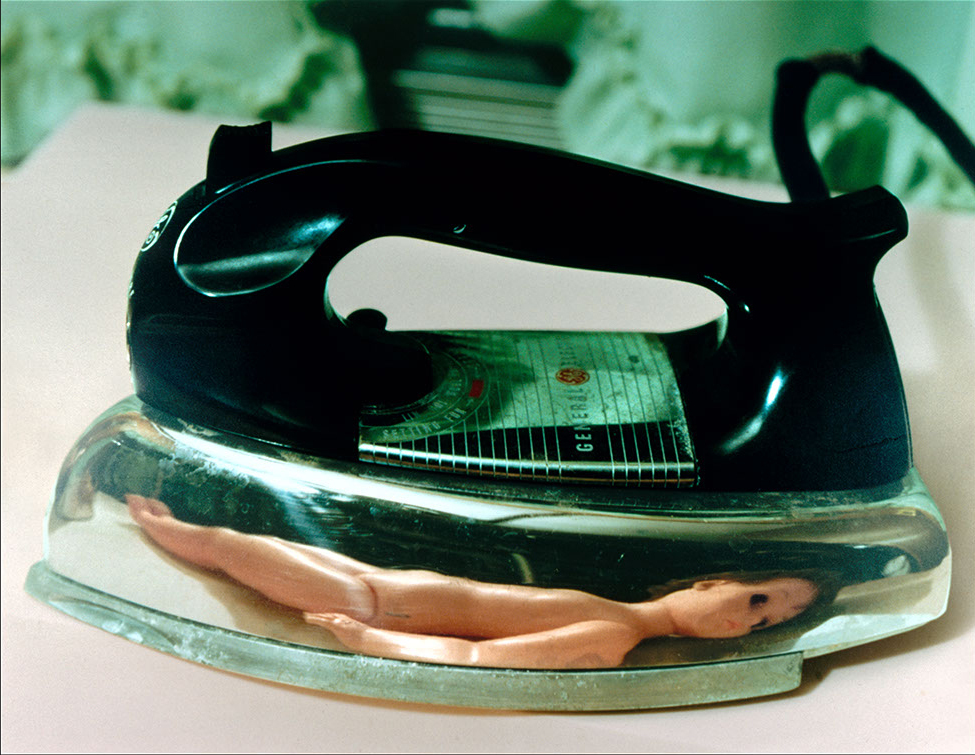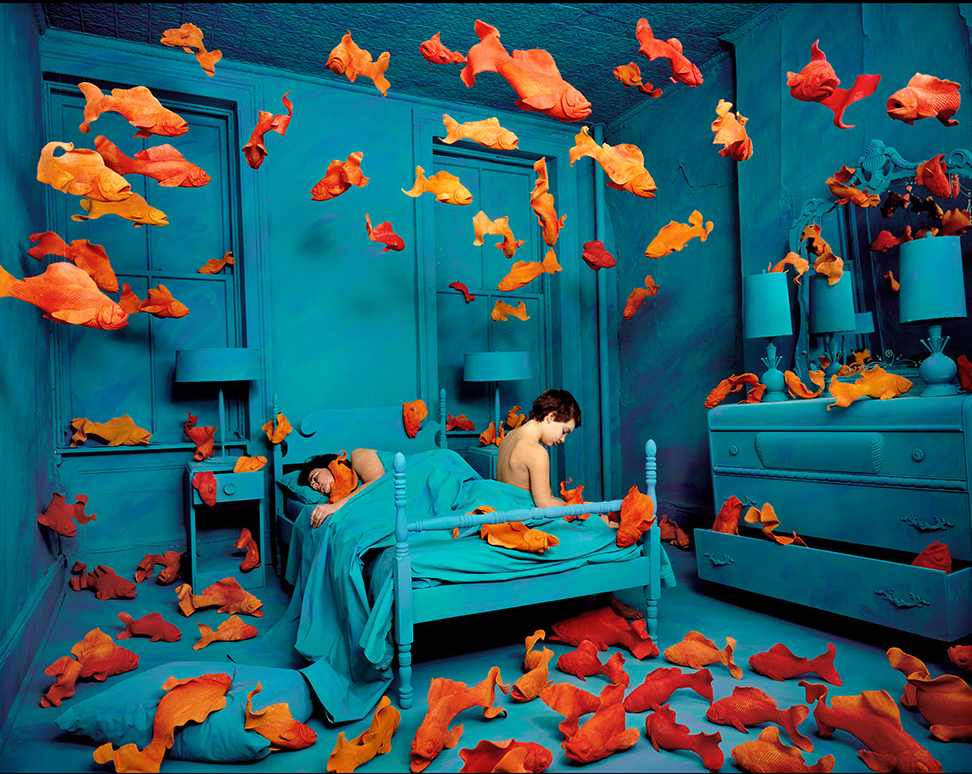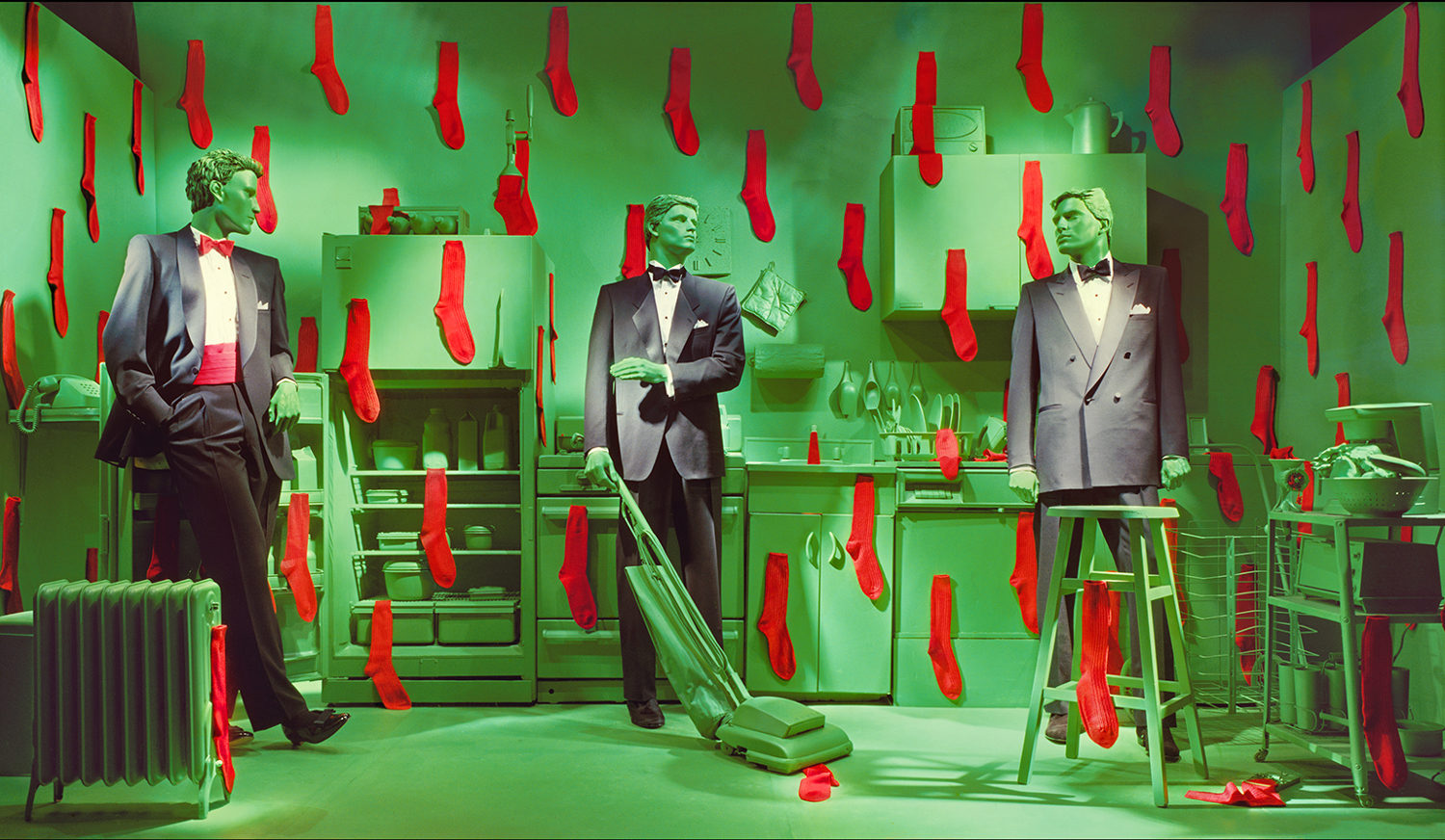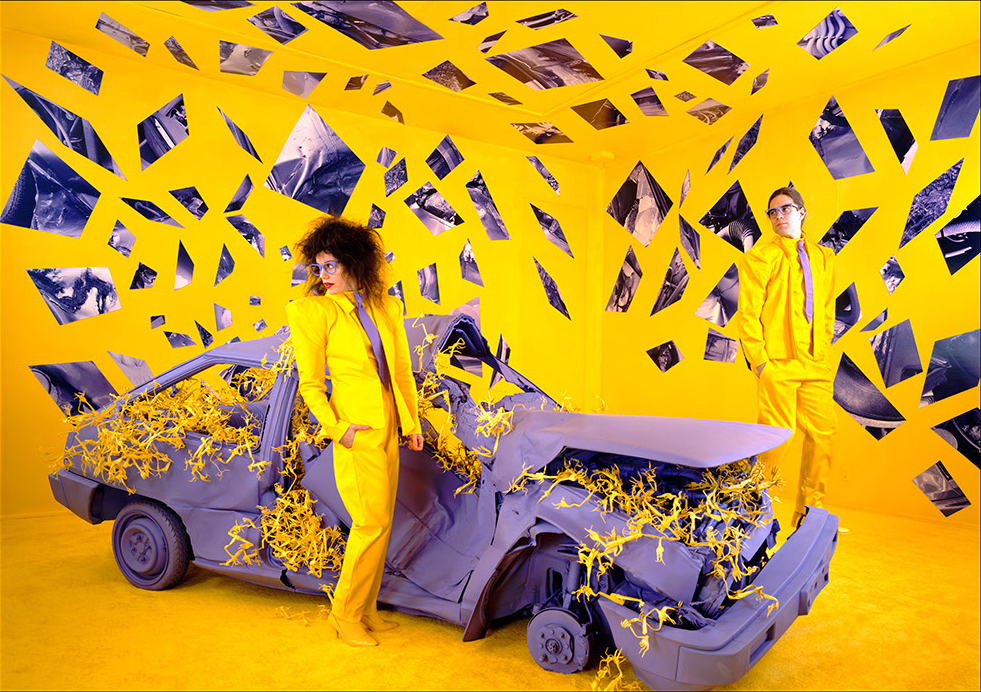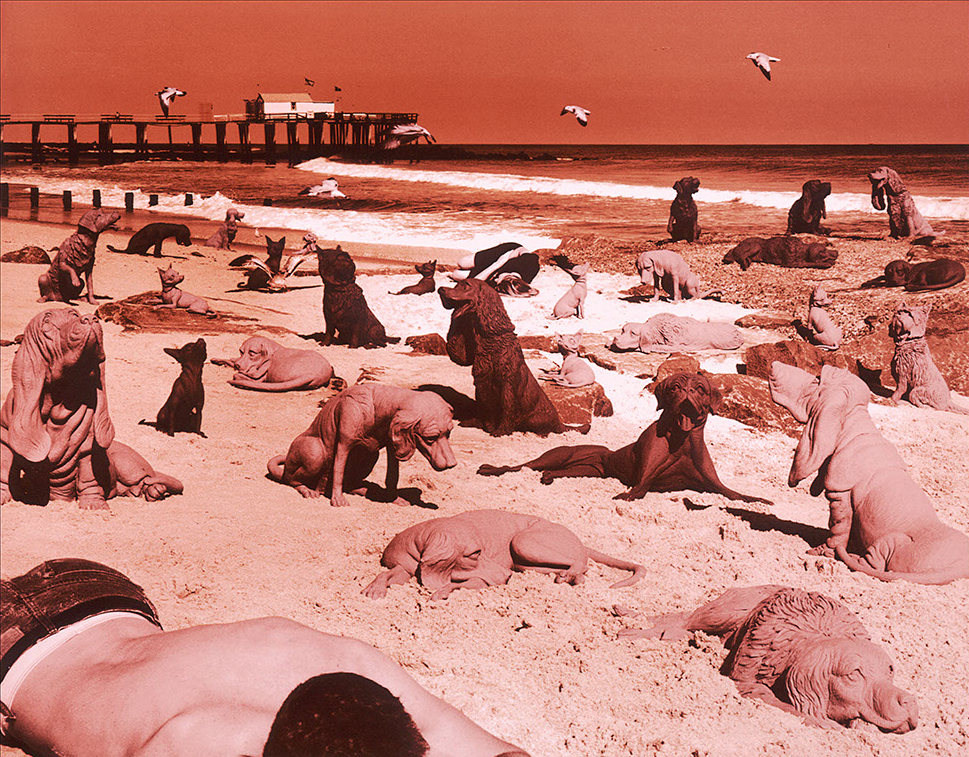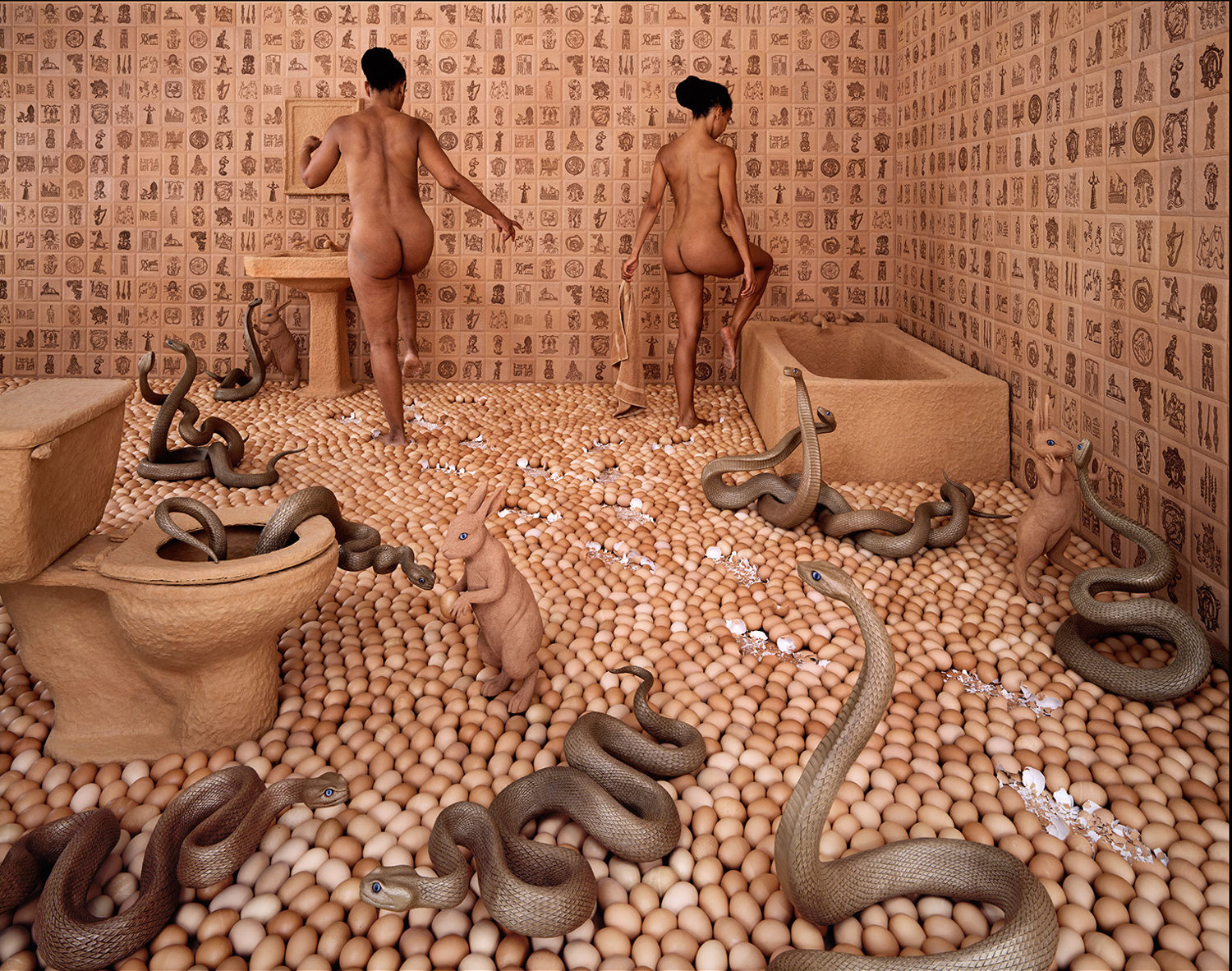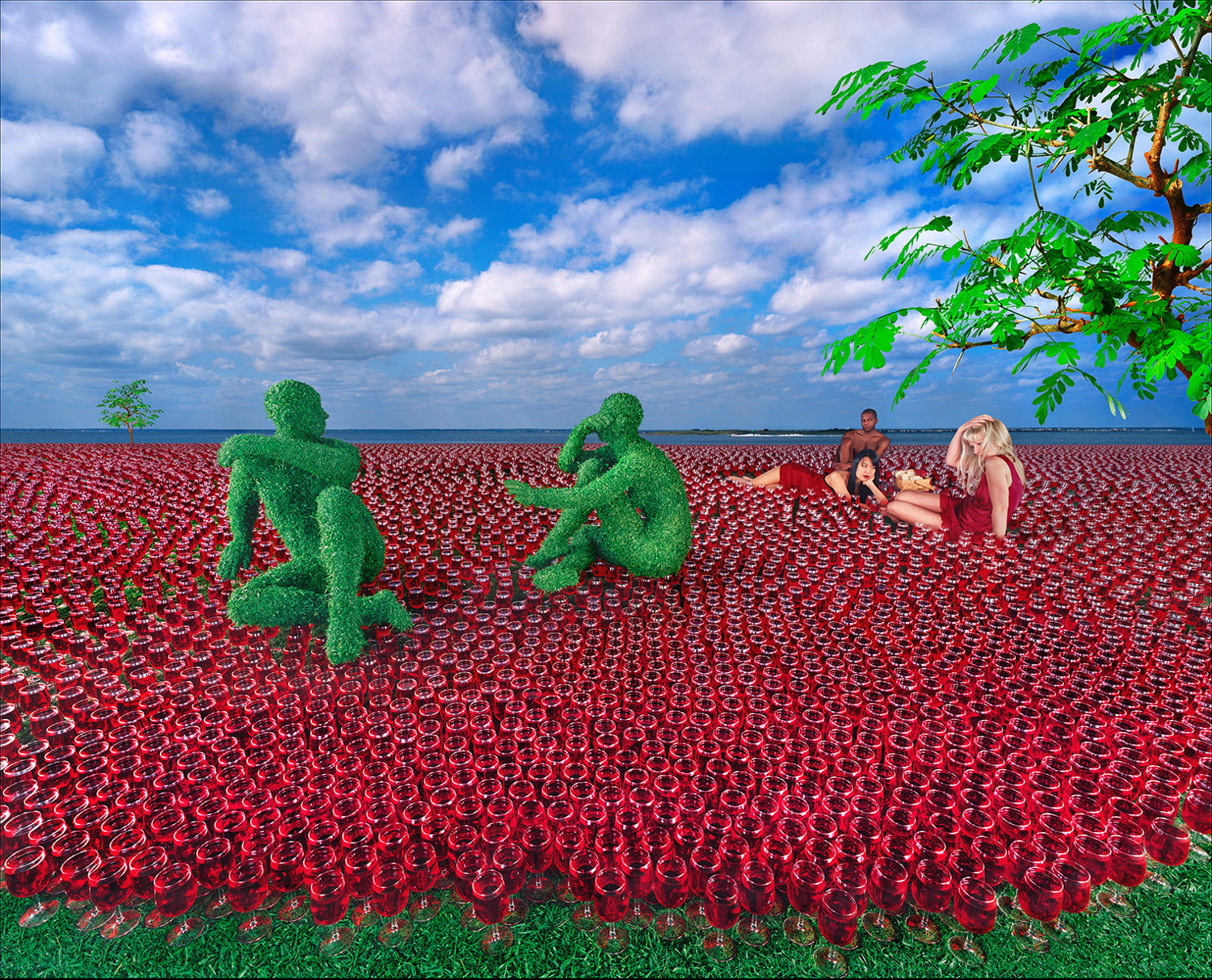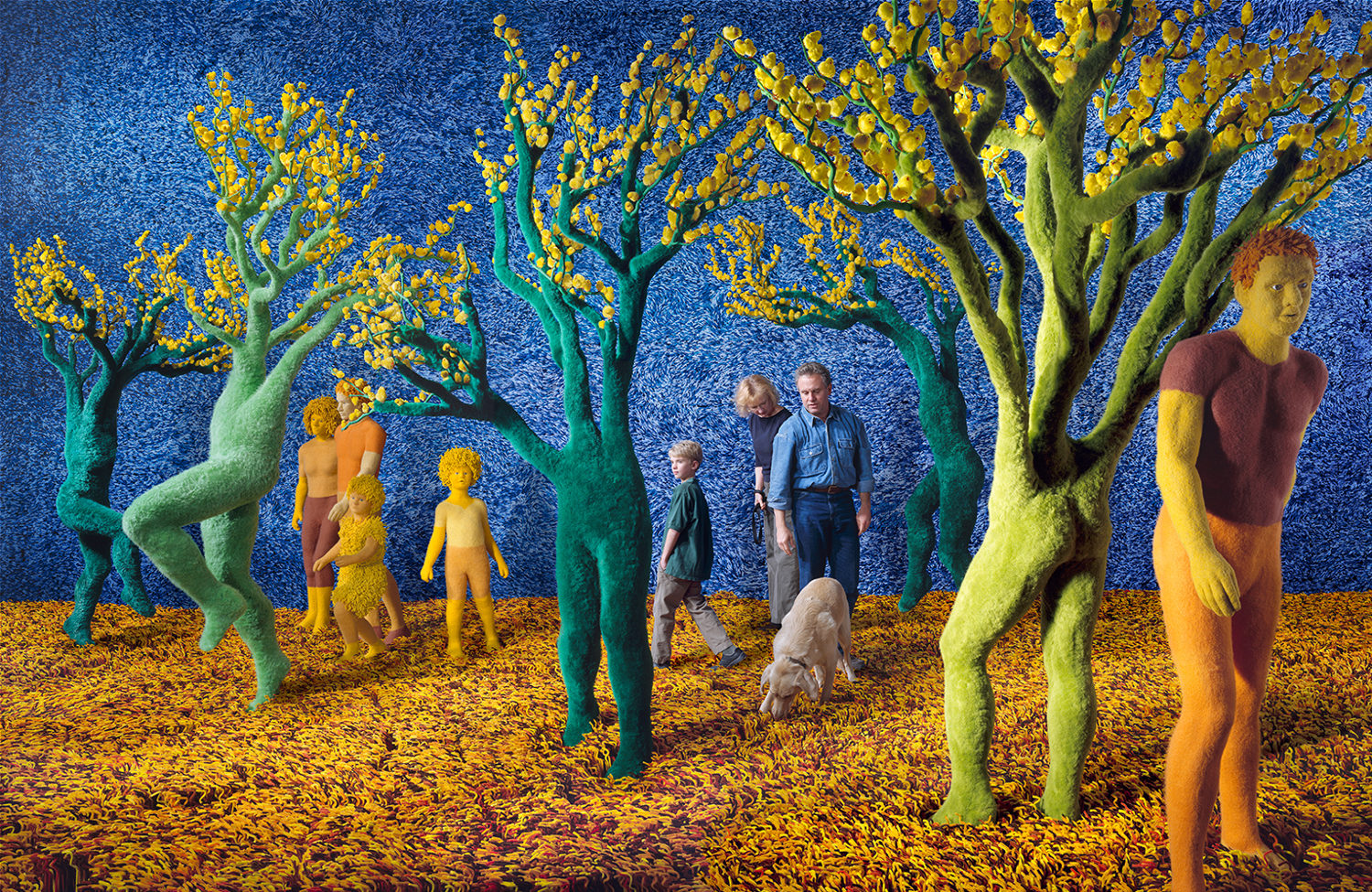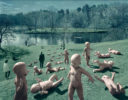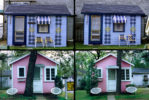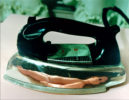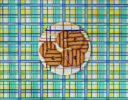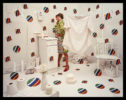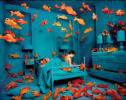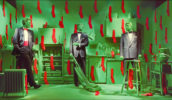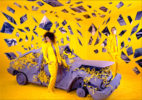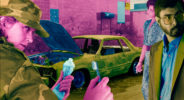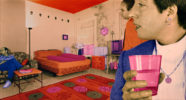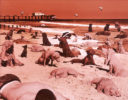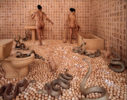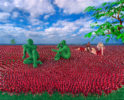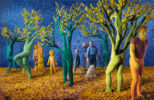Sandy Skoglund
Giusti Sergio, Zanot Francesco, Sandy Skoglund: The Artificial Mirror, exh. cat., Pallazzo Giovanelli, Venice (5 June–13 September 2009), Roma, Contrasto, 2009
→Picazo Gloria, Roegiers Patrick, Sandy Skoglund, exh. cat., Fundacio La Caixa, Barcelone (28 April–31 May 1992), Barcelone, Fundacio La Caixa, 1992
Sandy Skoglund, Espace Photographique, Paris, with the support of Paris Audiovisuel and the Fondation Caixa of Barcelona, 10 June–2 August 1992
→Sandy Skoglund, Fundacio “La Caixa”, Barcelona, 28 April–31 May 1992
→Sandy Skoglund: The Artificial Mirror, Palazzo Giovanelli, Venice, 5 June–13 September 2009
American photographer.
Widely circulated since the 1980s, the colourful, hallucinatory images created by Sandra Louise Skoglund have a touch of the fantastical. After having studied painting at the University of Iowa, she moved to New York in 1972, where she started working as a conceptual artist. In 1974, her first work, inspired by the work of the photographer couple Becher, portrays a series of apparently identical houses, but with only one differing detail. In 1978, she worked on advertising rhetoric and, with her series Food Still Lifes, created still lifes with vibrant, artificial colours made from food placed on tablecloths with geometric patterns (Luncheon Meat on a Counter). Her images became internationally recognised after Radioactive Cats (1980), which shows an elderly couple in a grey kitchen overrun by fluorescent green cats. Staged in her small studio and with her neighbours as actors, the image evokes (as does science-fiction), the intrusion of nature into daily life. The artist photographs imaginary spaces that she invents entirely: an invasion of coat-hangers in a yellow room with a pink floor (Hangers, 1980) or terracotta goldfish floating in a blue children’s bedroom (Revenge of the Goldfish, 1981). Created with the Cibachrome process, the aggressive colours contrast greatly with the aesthetic of black-and-white photography, giving the images an unreal atmosphere. The artist took several months to create the set for each image. For Atomic Love (1992), where the decors and models are entirely covered in raisins, she even took classes on grape-growing. The stage design is often spectacular, the work itself, baroque and theatrical, and the atmosphere that emanates from it, stressful. The photographer sets up a neurotic and potentially nightmarish universe of the American middle class. The dangers of dehumanisation are dealt with in a tragic and parodic way; the obsession with cleanliness, for example, is ridiculed in Germs Are Everywhere (1984), where a green living room is literally invaded by chewed pink chewing gum.
In the situations she invents, human beings often disappear behind a mob of animals or objects. Her work perfectly symbolises the hybrid practices of contemporary art; for her, sculpture is the starting point for organising a space that she transforms into an installation, and which photography records. The photographic medium is vital, allowing a variety of materials to be brought together, contained within one creative process. Her works therefore exist in two forms: the installation and the photographs. Fox Games (1989), an image portraying red foxes taking over a blue-grey restaurant, was the result of an installation created at the Centre Pompidou, but the work was later done again as just an installation with the colours inverted. Walking on Eggshells (1997) shows how an installation can give physical form to anxiety: naked women walk on ground covered with eggs and filled with rabbits and snakes. Skoglund’s artistic approach is the result of in-depth thought on the combination of genres and on the history of photography, which she has taught at Rutgers University since 1976. All the while creating a feeling of strangeness and anxiety in the viewer, the installations created by this atypical artist still bear touches of fantasy and humour.
© Éditions des femmes – Antoinette Fouque, 2013
© Archives of Women Artists, Research and Exhibitions, 2017



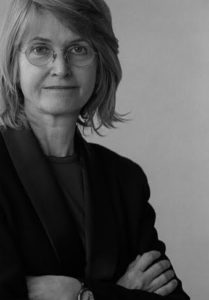
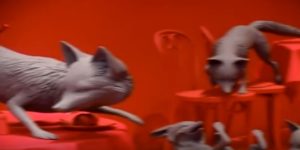 Sandy Skoglund about Fox Games
Sandy Skoglund about Fox Games 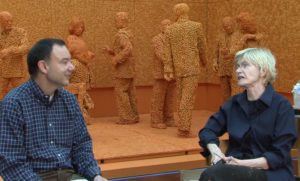 Interview at The McNay Art Museum, 2011
Interview at The McNay Art Museum, 2011 